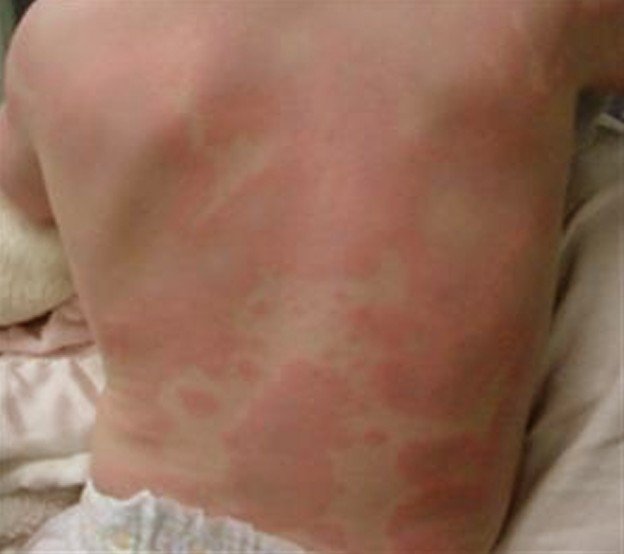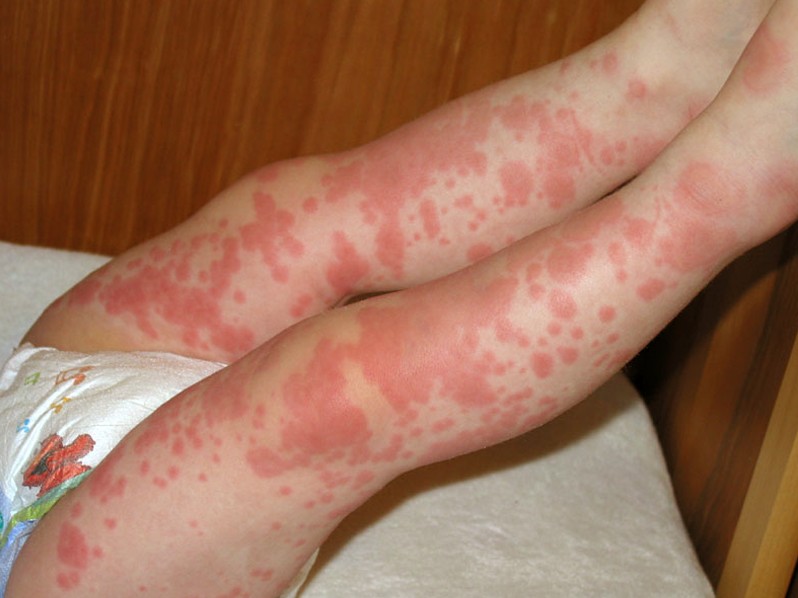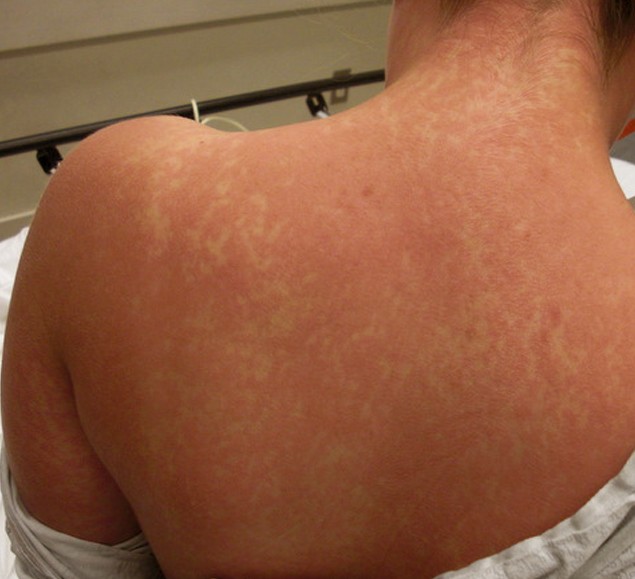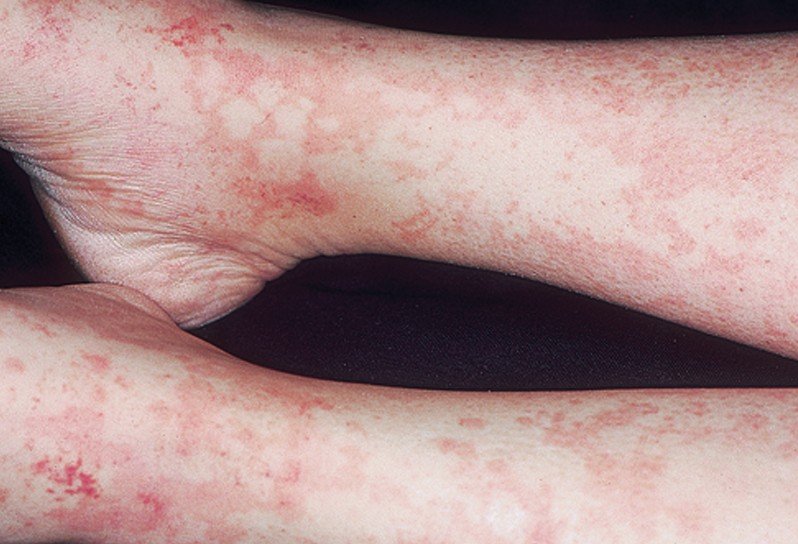Serum Sickness
What is Serum Sickness?
Serum sickness is also known as Type III hypersensitivity reaction and is described as a hypersensitive response to non-human proteins and foreign proteins from a certain medication and antiserum. The inflammatory response of the body is the result of the activation of the immune system when it erroneously recognized the antiserum as a foreign protein which should be warded off from the body.
Serum sickness is analogous to an allergic reaction. It usually develops within 7 days to 10 days following initial exposure to foreign proteins. It is characterized by the triad of fever, joint pain or swelling and skin rash.
Serum sickness is a self-limiting condition that normally resolves within several days. The prognosis is relatively good except in cases where the internal organs are involved. Serum sickness can occur to anyone especially those who are undergoing treatment with anti-serum. It can equally affect both men and women and can occur to people from all over the world. Serum sickness is also associated with mortality although this seldom happens. The mortality, if it occurs, is more on the secondary complication that proves to be so severe such as the complication of anaphylaxis, shock and acute renal failure.
The anti-serum is normally used to protect the body from antigens and to counteract the poisons from the bite of snake and other poisonous living creature. The antiserum is also being used to protect the body from infection and other harmful pathogens such as from rabies and tetanus.
Serum sickness was first described in 1906 by an Austrian pediatrician and scientist named Clemens Peter Freihher von Pirquet and American pediatrician named Bela Schick. The disease was first noticed in patients who were given a horse serum or vaccine for smallpox. The hypersensitivity reaction towards the second injection is observed to be more rapid than from the initial injection of the serum. The reaction was characterized by fever, skin rash, joint pain and swelling and lymphadenopathy after the patients were given a shot of horse serum. Similar reactions were also observed afterwards in patients given with antivenin and antitoxins.
The frequency of serum sickness worldwide is decreasing as a result of advanced medical treatment that improved the administration of antiserum or foreign protein in the body. The incidence of serum sickness is now more in relation to the dosage given to the patient. The antigen type also plays a role in the possibility of onset of serum sickness.
Serum Sickness Symptoms
The symptoms of serum sickness often develop within 1 week to 3 weeks following initial administration or exposure with antiserum and other medications. In the case of recurrence or second exposure to antiserum, the symptoms occur faster and usually about 1 day to 3 days after exposure or administration of antiserum.
Serum sickness is characterized by the triad of:
- Onset of fever
- Development of skin rash similar to urticaria
- Joint pain and swelling
Other symptoms may include the following:
- Facial swelling
- Enlargement of the lymph nodes
- Itching
- Malaise
- Wheezing
- Blurry vision
- Gastrointestinal problem
- Nausea
- Headache
- Abdominal cramping
Causes
Serum sickness occurs following injection with antiserum. The protein in the serum is mistakenly identified by the immune system as a foreign particle in the body that should be warded off the body. With the erroneous recognition of antigen as harmful to the body, the immune system is stimulated to produce antibodies to fight off the deemed harmful substance in the body. The antibodies and the antigens then bind together and mount up in the cell layers that line the blood vessels, lymph vessels and other parts of the body. The buildup of antigen and antibodies that bind together causes the inflammation and onset of symptoms of serum sickness.
Antiserum is among the many proteins contained in plasma. It is derived from the plasma of humans and animals and is meant to fight off infective organisms, harmful and poisonous substance in the body. The antiserum in serum sickness is isolated from non-human and when injected into the body is mistakenly recognized by the immune system as a foreign substance. Thus, the immune system in return produces an antibody to fight off the mistakenly recognized as foreign substance causing the antibody to fight off the serum that should have protected the body from infective agents or poisonous substances.
Thymoglobulin is an anti-thymocyte globulin drug derived from the rabbit. This drug use in the treatment of organ transplant rejection is also potential for the development of serum sickness. Rituximab is a drug used for the treatment of immune system ad cancers is also another cause of serum sickness.
There are several drugs that can also be associated with the onset of serum sickness and such drugs are the following:
- Penicillin
- Barbiturates
- Thiazides
- Fluoxetine Prozac
- Cephalosporin
- Sulfonamides
- Griseofulvin
- Phenytoin
- Procainamide
- Streptokinase
Diagnosis
Diagnosis of serum sickness is initially done by obtaining the medical history of the patient including the medications recently taken. This will serve as the baseline for identifying serum sickness in patients.
Blood tests are especially helpful in identifying immune complexes. The immune complexes accumulate in the blood vessels and stimulate the complement cascade that resulted to the inflammation. The blood test will also reveal low level of complement if serum sickness is present.
Serum Sickness Treatment
Serum sickness is a self-limiting condition that normally resolves within a period of several days without treatment. The prognosis is relatively good except in serum sickness with involvement of internal organs.
The primary aim of treatment is in the relief of symptoms. In the treatment of serum sickness, the patient need not be hospitalized except when the patient is immunocompromised or when the patient is at a very young age where the immune system is not fully developed.
The initial treatment of serum sickness is in discontinuation of the offending drugs. The symptoms usually dissipate within 4 to 5 days after the offending drug is discontinued.
The treatment of choice in serum sickness depends on the severity of the symptoms. The drug of choice for the treatment includes corticosteroids, antihistamines and analgesics.
Severe cases of serum sickness are often given with high doses of corticosteroids given intravenously over a period of 3 days.
Plasma exchange can be administered to eliminate the immune complexes including the antibody and the protein.
Serum Sickness Pictures
Photos and Pictures of Serum Sickness….





